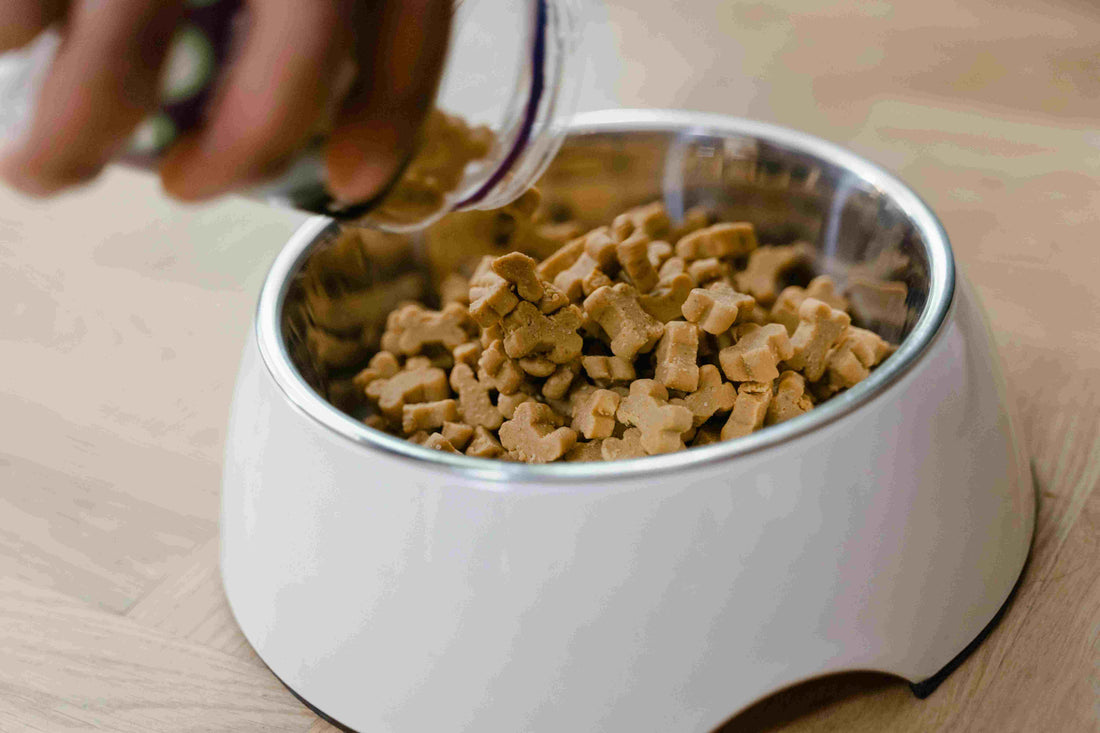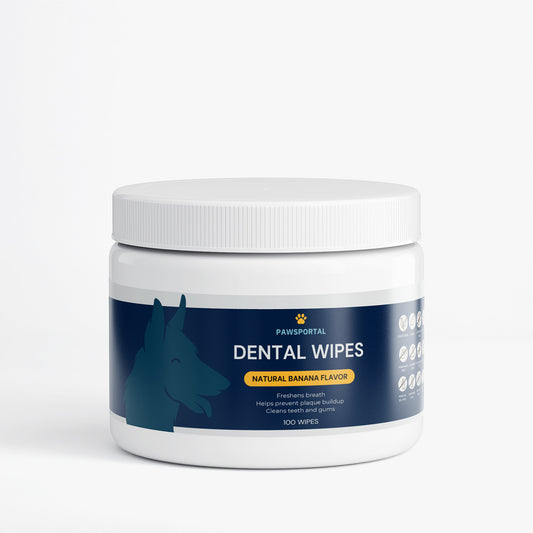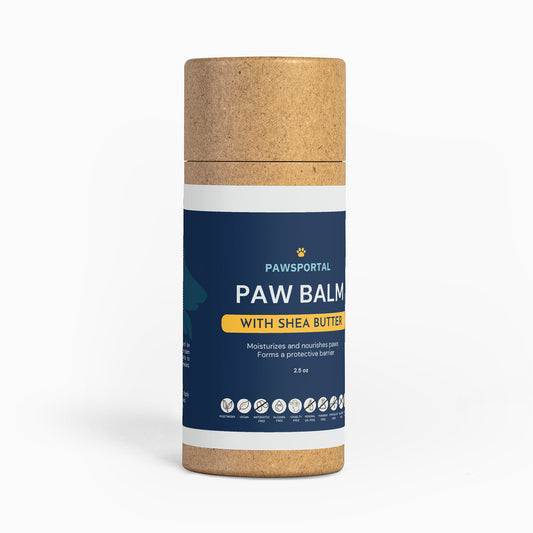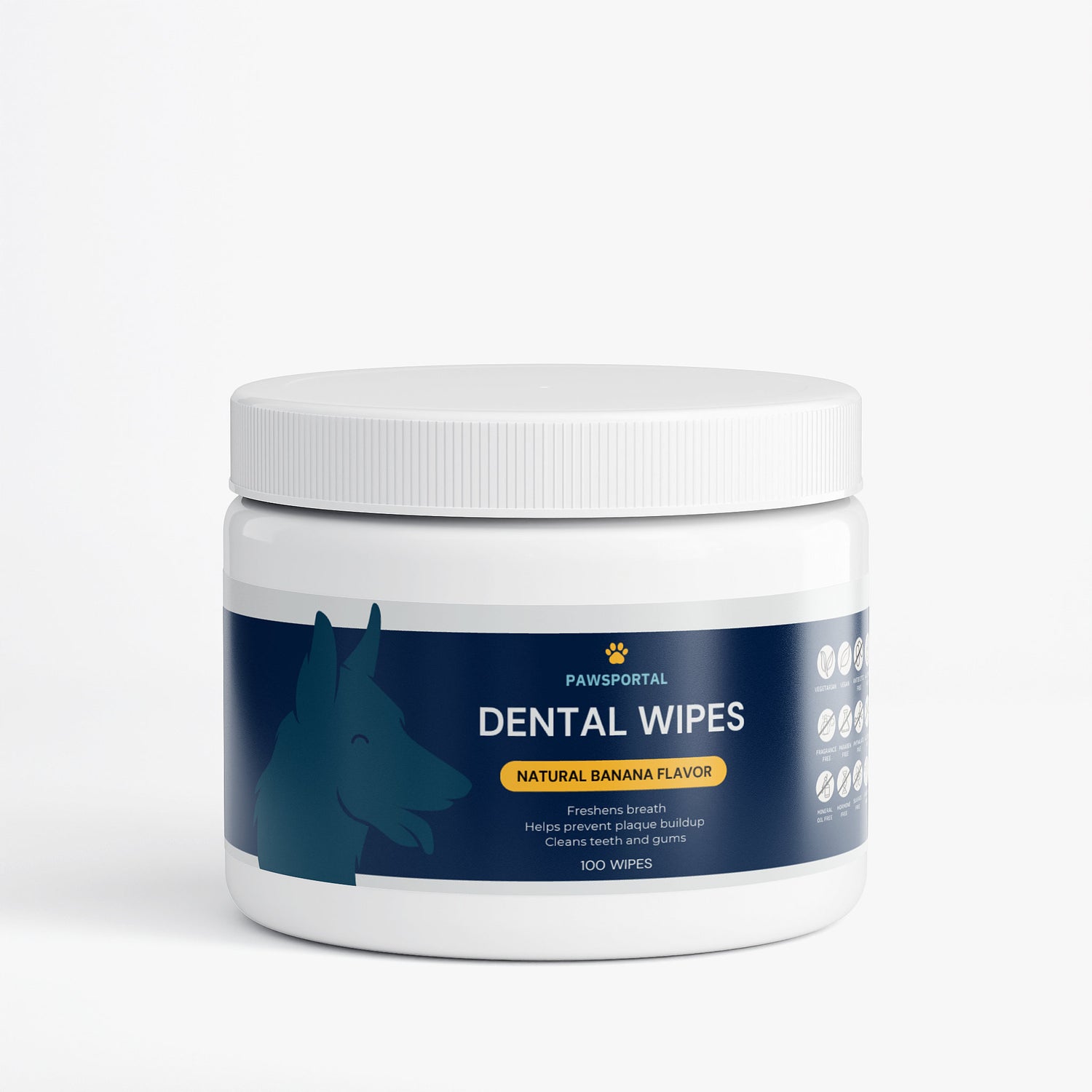
How Much Dog Food Should Your Dog Eat? A Comprehensive Guide to Feeding Your Dog
Share
As a devoted dog owner, ensuring your furry friend's health and happiness begins with one essential question: How much dog food should your dog eat? Finding the right amount can feel overwhelming amidst the vast sea of brands, formulations, and dietary needs. Each dog is unique, with factors like age, weight, and activity level playing a crucial role in their nutritional requirements. In this comprehensive guide, we’ll break down the best practices for feeding your dog, empowering you to make informed decisions that suit their specific needs. Whether you're introducing a puppy to their first kibble or adjusting the diet of your long-time companion, understanding proper portions can significantly impact their well-being. Get ready to discover the ideal feeding guidelines to keep your beloved canine thriving, happy, and full of energy!
_____________________________________________________________________________________________

Understanding Your Dog's Nutritional Needs
Understanding your dog's nutritional needs is the cornerstone of ensuring their health and longevity. Just like humans, dogs require a balanced diet that includes proteins, fats, carbohydrates, vitamins, and minerals. Each nutrient plays a critical role in maintaining the body's normal function and keeping dogs active and healthy. Proteins are essential for muscle repair and growth, fats provide energy and support cell structure, while carbohydrates are a significant source of energy. Vitamins and minerals, though needed in smaller amounts, are crucial for metabolic functions and maintaining the integrity of bodily systems.
The nutritional needs of your dog can vary significantly based on their life stage, breed, size, and health status. Puppies, for example, need more protein and calories to support their rapid growth and development, while senior dogs might require fewer calories but more fiber to aid digestion. Similarly, working dogs or those with high activity levels need more energy-dense diets compared to more sedentary pets. Therefore, understanding these needs can help in selecting the appropriate type of food and determining the right portion sizes.
Another factor to consider is any specific health conditions your dog may have. Dogs with allergies, gastrointestinal issues, or chronic diseases such as diabetes or arthritis may require specialized diets. Consulting with your veterinarian is essential in such cases, as they can provide tailored recommendations that address your pet's unique health needs. By paying attention to these details, you can make informed decisions that contribute to your dog’s overall well-being.
_____________________________________________________________________________________________
Factors Influencing Dog Food Portions
Determining the appropriate amount of food for your dog involves considering several factors. One of the primary factors is the dog's weight. Overweight dogs require fewer calories to help them reach a healthier weight, while underweight dogs may need more food to build up their body mass. It's important to regularly monitor your dog's weight and adjust their food portions accordingly. Consulting with your veterinarian can provide a more accurate assessment of your dog's ideal weight and caloric needs.
Another significant factor influencing food portions is the dog's activity level. Highly active dogs, such as those that participate in agility training, hunting, or regular high-intensity play, burn more calories and thus need more food to sustain their energy levels. Conversely, less active dogs, including those that are older or have a more sedentary lifestyle, will require fewer calories to prevent weight gain and associated health issues. Matching food portions to activity level helps maintain a healthy weight and provides the energy needed for their daily activities.
Age also plays a crucial role in determining how much food your dog should eat. Puppies, adult dogs, and senior dogs each have different nutritional requirements. Puppies, due to their growth and development needs, require more frequent and larger meals rich in protein and calories. Adult dogs need a balanced diet that maintains their current weight and health, while senior dogs might need fewer calories but more fiber to aid digestion. Adjusting portion sizes as your dog ages ensures they receive the appropriate nutrients for their stage of life.
_____________________________________________________________________________________________
Different Types of Dog Food: Dry, Wet, and Raw
Choosing the right type of dog food is as important as determining the correct portion size. The three main types of dog food are dry, wet, and raw, each with its benefits and considerations. Dry dog food, or kibble, is a popular choice due to its convenience, longer shelf life, and cost-effectiveness. Kibble typically contains all the necessary nutrients and is easy to measure for portion control. It also helps in maintaining dental health by reducing plaque buildup.
Wet dog food, on the other hand, is often more palatable and can be easier for dogs to eat, especially those with dental issues or picky eaters. It has a higher moisture content, which can aid in hydration, particularly beneficial for dogs that do not drink enough water. However, wet food can be more expensive and may spoil faster once opened. It’s important to store it properly and monitor portion sizes to prevent overfeeding, as the higher palatability can lead to dogs eating more than necessary.
Raw dog food, including commercially prepared raw diets or homemade options, is another choice gaining popularity among dog owners. Proponents of raw diets argue that they more closely mimic a dog's natural, ancestral diet and can lead to improved coat condition, healthier skin, and increased energy levels. However, feeding raw food requires careful handling and preparation to avoid bacterial contamination and ensure a balanced diet. Consulting with a veterinarian or a pet nutritionist is recommended to ensure that a raw diet meets all of your dog's nutritional needs.
_____________________________________________________________________________________________
How to Read Dog Food Labels for Portion Control
Reading dog food labels is essential for ensuring you are feeding your dog the right amount of food. The information on these labels can help you determine the caloric content and nutritional breakdown of the food. Serving size recommendations are often provided based on weight categories, but these are general guidelines that may need to be adjusted based on your dog's specific needs. Understanding the calorie content per serving is crucial for accurate portion control.
Ingredients lists on dog food labels are arranged by weight, with the heaviest ingredients listed first. This can help you identify the main components of the food and ensure it meets your dog's dietary needs. High-quality dog foods typically list specific meat sources, such as chicken or beef, as the first ingredient. Avoid foods with vague ingredient descriptions like "meat by-products" or those with high amounts of fillers such as corn or soy. High-quality ingredients contribute to better overall nutrition and can affect how much food your dog needs.
Guaranteed analysis on the label provides information on the minimum and maximum percentages of crude protein, fat, fiber, and moisture. Comparing these values can help you choose food that aligns with your dog's nutritional requirements. Additionally, some labels include feeding guidelines that suggest daily portions based on your dog's weight, age, and activity level. These guidelines are a good starting point, but you may need to adjust portions based on your dog's individual needs and changes in weight or activity levels.
_____________________________________________________________________________________________
Age and Activity Level: Tailoring Portions for Your Dog
Tailoring your dog's food portions according to their age and activity level is crucial for maintaining their health. Puppies, for instance, are in a rapid growth phase and require more frequent meals with higher calorie content to support their development. Typically, puppies should be fed three to four times a day until they are about six months old. After that, you can gradually reduce the frequency to twice a day. Ensuring that their diet is rich in protein and essential nutrients helps promote healthy growth and development.
Adult dogs have different nutritional needs compared to puppies and seniors. Their diet should maintain their current weight and health, providing energy for daily activities and overall well-being. The activity level of adult dogs can vary widely, from highly active working breeds to more sedentary pets. Active dogs require more calories to sustain their energy levels, while less active dogs need fewer calories to avoid weight gain. Adjusting food portions based on their activity level helps maintain a healthy weight and prevents obesity-related health issues.
Senior dogs, on the other hand, often have lower energy requirements and may benefit from a diet with fewer calories but more fiber to aid digestion. As dogs age, their metabolism slows down, and they may become more sedentary. Feeding smaller, more frequent meals can help manage their weight and digestion better. Additionally, senior dogs may have specific health conditions, such as arthritis or kidney disease, that require specialized diets. Consulting with your veterinarian can help tailor their diet to address these age-related changes and health needs.
_____________________________________________________________________________________________
Common Misconceptions About Dog Feeding
There are several common misconceptions about dog feeding that can lead to improper nutrition and health issues. One such misconception is that dogs should only eat meat. While dogs are primarily carnivores, they are also omnivores and can benefit from a balanced diet that includes vegetables, grains, and fruits. These provide essential vitamins, minerals, and fiber that contribute to overall health. A diet consisting solely of meat can lead to nutritional deficiencies and health problems.
Another misconception is that table scraps and human food are suitable for dogs. While some human foods can be safe and even beneficial in moderation, many are harmful or toxic to dogs. Foods like chocolate, grapes, onions, and certain spices can cause serious health issues. Additionally, feeding table scraps can lead to overfeeding and obesity. It's important to stick to a balanced dog food diet and consult with your veterinarian before introducing any human foods into your dog's diet.
There is also a belief that feeding dogs once a day is sufficient. However, most dogs benefit from being fed twice a day, which helps maintain consistent energy levels and prevents overeating. Feeding smaller, more frequent meals can also be easier on a dog's digestive system and help manage weight. It's important to establish a regular feeding schedule that aligns with your dog's age, size, and activity level to ensure they receive the proper nutrition.
_____________________________________________________________________________________________
Signs of Overfeeding and Underfeeding
Recognizing the signs of overfeeding and underfeeding is crucial for maintaining your dog's health. Overfeeding can lead to obesity, which is associated with various health problems such as diabetes, heart disease, and joint issues. Signs of overfeeding include excessive weight gain, difficulty in movement, and lethargy. If you notice your dog becoming less active or struggling with everyday activities, it might be time to reevaluate their diet and portion sizes.
On the other hand, underfeeding can result in malnutrition and a host of related health issues. Signs of underfeeding include weight loss, visible ribs and spine, a dull coat, and low energy levels. Your dog may also exhibit behavioral changes such as irritability or lethargy. If you observe these signs, it's important to consult with your veterinarian to determine the cause and adjust your dog's diet accordingly. Ensuring that your dog receives the right amount of food is essential for their overall well-being.
Regularly monitoring your dog's weight and body condition can help prevent overfeeding and underfeeding. Using a body condition score (BCS) chart, you can assess your dog's physique and determine if they are at a healthy weight. This chart helps you evaluate the amount of fat covering the ribs, the waistline, and the abdominal tuck. Regular check-ups with your veterinarian can also provide valuable insights and guidance on maintaining a healthy diet for your dog.
_____________________________________________________________________________________________
Recommended Feeding Guidelines by Dog Size
Feeding guidelines can vary based on the size of your dog. Small breeds, medium breeds, and large breeds each have different caloric and nutritional needs. Small breed dogs, such as Chihuahuas or Dachshunds, have higher metabolic rates and may require more calories per pound of body weight compared to larger breeds. They benefit from nutrient-dense foods that provide the necessary energy in smaller portions. It's important to monitor their weight and adjust portions to avoid obesity.
Medium breed dogs, such as Beagles or Cocker Spaniels, have moderate caloric requirements. Their diet should be balanced to maintain their energy levels and overall health. It's essential to provide them with a mix of proteins, fats, and carbohydrates to support their activity level. Regular exercise and portion control are key to preventing weight gain and ensuring they receive the proper nutrition.
Large breed dogs, such as German Shepherds or Golden Retrievers, have unique dietary needs due to their size and potential for rapid growth. They require a balanced diet that supports their bone and joint health, as well as their overall growth and development. Overfeeding can lead to obesity and related health issues, so it's important to monitor their weight and adjust portions as needed. Large breed puppy formulas are available to provide the necessary nutrients for their growth without promoting excessive weight gain.
_____________________________________________________________________________________________
Adjusting Your Dog's Diet: When and How
Adjusting your dog's diet may be necessary at various stages of their life or due to changes in their health or activity level. Transitioning to a new diet should be done gradually to avoid digestive upset. Start by mixing a small amount of the new food with the current food, gradually increasing the proportion of the new food over a week to ten days. This allows your dog's digestive system to adjust to the new diet and helps prevent gastrointestinal issues.
Changes in activity level, such as increased exercise or a more sedentary lifestyle, may require adjustments in food portions. If your dog becomes more active, you may need to increase their food intake to provide the necessary energy. Conversely, if your dog's activity level decreases, reducing their food portions can help prevent weight gain. It's important to monitor your dog's weight and body condition regularly and adjust their diet as needed to maintain a healthy weight.
Health conditions such as allergies, gastrointestinal issues, or chronic diseases may also necessitate dietary adjustments. Working with your veterinarian can help identify the best diet for your dog's specific needs. They may recommend specialized diets or supplements to address health concerns and ensure your dog receives the proper nutrition. Regular check-ups and monitoring can help manage these conditions and keep your dog healthy.
_____________________________________________________________________________________________
Finding the Right Balance for Your Dog's Health
Finding the right balance in your dog's diet is essential for their health and well-being. Understanding their nutritional needs, considering factors such as weight, age, and activity level, and choosing the appropriate type of food all contribute to maintaining a healthy diet. Regularly monitoring your dog's weight and body condition, and being aware of the signs of overfeeding and underfeeding, helps ensure they receive the right amount of food.
Tailoring your dog's diet to their life stage and activity level ensures they receive the necessary nutrients for growth, maintenance, and overall health. Consulting with your veterinarian provides valuable guidance and helps address any specific health concerns. By staying informed and proactive about your dog's diet, you can make informed decisions that contribute to their long-term health and happiness.
Ultimately, a balanced diet tailored to your dog's unique needs supports their energy levels, maintains a healthy weight, and contributes to their overall quality of life. By understanding and meeting their nutritional requirements, you can ensure that your beloved canine companion thrives and enjoys a happy, healthy life.

















